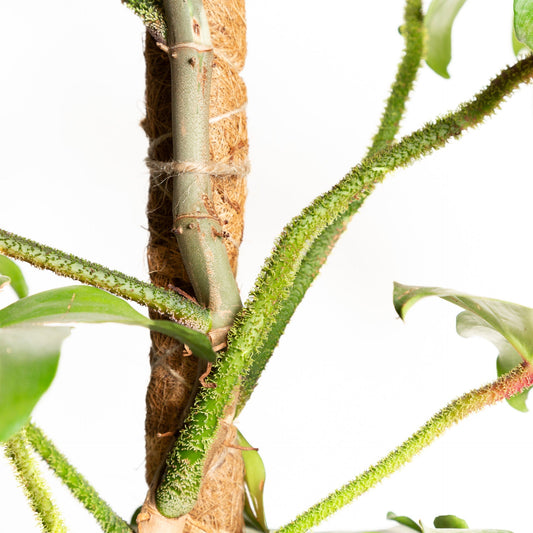So your plant collection is growing and you want to start using your vertical space to hang them but the thought of potential accidents feels risky. Well, fear not! Plastic drywall anchors are here to your rescue, and they are a lot more reliable than you might think! In this article, we'll be talking about how these humble but mighty little pieces of plastic work so you can feel confident about using them to safely and securely hang your plants and achieve that lush canopy view you've always wanted.
What Are Plastic Drywall Anchors?
Before we get into the nitty-gritty of how plastic drywall anchors work, let's take a moment to understand what they actually are. Plastic drywall anchors are small, cylindrical devices designed to provide extra support and stability when you're hanging something heavy on your walls or ceiling. They are commonly used in drywall (hence the name) but can also be used in other hollow wall materials too.
How Do They Work?
-
Expansion: The magic behind plastic drywall anchors lies in the way they are deigned to expand inside the wall once the screw is tightened. They are typically made of a strong yet flexible plastic, such as nylon, and are shaped like a hollow tube. There are many different designs, each with a slightly different mechanism but most will have some kind of flared sides or prongs and accompanying slits. When you insert a screw or hook into the anchor and tighten, the anchor expands inside the wall.
-
Grip: As you tighten the screw, it pushes against the anchor's sides, causing them to expand and grip the inner surface of the hole and or the space behind the drywall. This gripping action creates a secure and stable anchor point, preventing your heavy potted plant from falling.
-
Weight Distribution: Once the screw is tightened, drywall anchors are designed to distribute the weight of it's load (in this case your hanging plant) across a wider area of the wall. This ensures that the weight of your plant is evenly supported and significantly reducing the risk of damage or the anchor pulling out of the wall.
-
Flexible Use: These anchors are versatile and come in a variety of sizes and types to accommodate different weights and applications. Most hooks will come with appropriate accompanying drywall anchors. Our hooks for example come with 3 screws with drywall hooks which are designed to comfortably accommodate up to 75 pounds. If your chosen hanging apparatus does not include these anchors they can be found in universal sizes and inexpensively at any hardware store.
Tips for Using Plastic Drywall Anchors
Now that we have a better understanding about how plastic drywall anchors work, here are some tips to ensure a stress free and successful hanging experience.
-
Choose the Right Anchor: Select an anchor that is rated for the weight of your potted plant. Check the packaging for weight guidelines. For most potted plants your plant/pot combo will weigh between 5 and 25 pounds or less but to be safe we would recommend your anchors be intended to support 50 - 75 pounds. This way we can feel confident that when you water or inevitably bump into your planter it won't tip it won't exceed the weight limit of your anchor.
-
Locate Wall Studs: Whenever possible, it's best to anchor heavy loads directly into wall studs. Drywall anchors are great tools and do their job well but a stud is going to be even stronger and easier if you can mount directly into them. Use a stud finder to locate them behind the dry wall. If you do find a stud you can screw directly into the wall in that spot without using a drywall anchor.
-
Follow Installation Instructions: Read and follow the installation instructions provided with the anchors carefully. They will guide you on the correct hole size to drill and how to insert the anchor. Typically you will drill a hole into the wall just a little bit smaller than the plastic anchor and then tap the plastic anchor into the hole with a hammer so that the anchor is secure and flush with the wall.
-
Use the Right Tools: Having the right size bit (typically listed in the instructions) is the simplest way to ensure that your dry wall hook will stay firmly inside the wall. If your drill bit is a little too small you can "wiggle" your drill in a circular motion inside the drywall to increase the size of the hole a little bit. Remember its better to start small and slowly make the hole bigger then once you can insert the anchor using a little bit of pressure, you've got it!
-
Test the Strength: Before hanging your heavy potted plant, give the anchor a gentle tug to ensure it feels solid and secure in the wall. If it pops out or feels loose try again in another spot and start with a smaller drill bit. (If you make an extra hole or two its ok, walls are easy to patch ;))
Plastic drywall anchors are a reliable and efficient solution for hanging heavy potted plants from the ceiling. With their specialized expanding designs and gripping action, they provide the stability and support you need to confidently display your green companions. Just remember to choose the right anchor, locate wall studs if possible, and follow the installation instructions carefully. With these simple steps, you can enjoy the beauty of your hanging plants while knowing they are securely anchored to your ceiling, thanks to these dependable plastic anchors. Happy planting!


